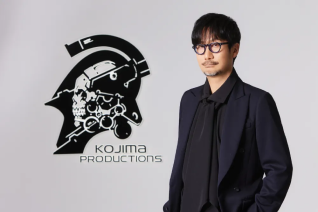GameTime
FR EN
The Role of Directors
In this article, we will take Hideo Kojima as an example to understand the role of a director in video games.
Hideo Kojima, born on August 24, 1963, in Japan, is an iconic figure in the video game industry, especially known for creating the Metal Gear series. His journey began in 1986 at Konami, where he first worked as a game designer. However, it was with the release of Metal Gear in 1987 that his career truly took off. This title introduced stealth elements into the gameplay, an innovative concept that profoundly influenced the industry.

Kojima and the logo of his company
Kojima was able to combine innovative gameplay mechanics with cinematic storytelling. With Metal Gear Solid, released in 1998 on PlayStation, he redefined storytelling in video games. This game captivated players with its deep characters, complex themes of war and technology, as well as its elaborate cutscenes. This blend of immersive gameplay and engaging storytelling made Kojima a pioneer in the art of interactive storytelling.

Kojima and Norman Reedus for the release of Death Stranding
His impact goes beyond just creating games. Kojima has been an innovator in game technologies, experimenting with non-linear narrative approaches, particularly in Metal Gear Solid 2: Sons of Liberty. In 2005, he founded his own studio, Kojima Productions, and continued to explore unique concepts with titles like P.T. and Death Stranding. The latter, released in 2019, sparked numerous reflections on interconnectedness and loneliness, further solidifying his status as a visionary artist.
In summary, Hideo Kojima became famous for his innovative approach to design and his ability to tell poignant stories, transforming video games into a respected and influential art form. His legacy continues to inspire a new generation of developers.

